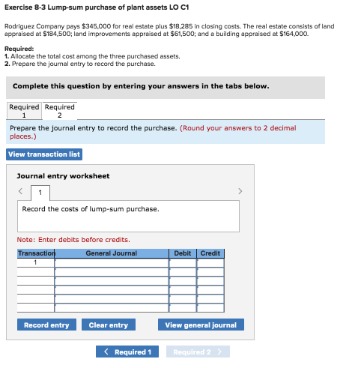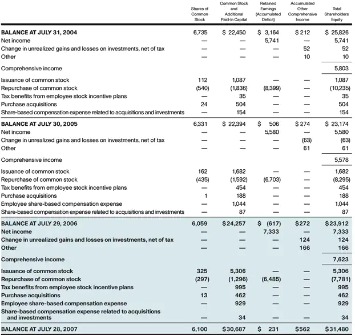
A high accounts receivable turnover ratio is generally preferable as it means you’re collecting your debts more efficiently. There’s no standard number that distinguishes a “good” AR turnover ratio from a “bad” one, as receivables turnover can vary greatly based on the kind of business you have. Collection challenges are often a result of inefficiencies in the accounts receivable (AR) process. Accounts receivable turnover ratio is an important metric for determining the effectiveness of your collection efforts so that you can make any necessary course corrections. Implement new software to streamline the billing process and ensure timely delivery of invoices. Automated reminders help in following up with customers who have outstanding balances, reducing the chances of late payments.
By staying on top of this formula regularly,
you can ensure efficient cash flow management and make informed decisions to improve overall financial health. To expedite the collection of outstanding invoices, optimizing your accounts receivable process is crucial. While various strategies can be employed, one highly effective method is implementing ACH debit, allowing you to directly withdraw payment from your customers’ accounts when it becomes due.
How to Calculate Days in A/R for Medical Practices
Understanding when and how to use the Days AR formula empowers procurement professionals with valuable data that helps drive strategic decision-making processes within an organization’s financial management operations. Additionally, suppliers may find value in using the Days AR formula as part of their supplier evaluation process. It allows them to gauge how prompt their customers are at settling outstanding balances, enabling them to make better-informed decisions about which clients they want to continue doing business with. When discussing a company’s financials, specifically “net revenue,” it refers to the comprehensive monetary value derived from selling products or services to customers within a designated timeframe. To illustrate, the construction and oil sectors experience a higher incidence of delayed payments, resulting in considerably longer A/R days compared to retail or service industries. Consequently, it is not appropriate to directly compare A/R days between businesses operating in different industry segments.

Upon entering that equation into our forecast period, we arrive at the following accounts receivable balances. With AR automation software, you can automatically prompt customers to pay as a payment date approaches. With an AR automation solution that integrates directly with your enterprise resource planning (ERP) system, you can create invoices in your primary accounting system and deliver them to your customers automatically. Because AR departments historically experience a high degree of manual work, streamlining collections processes is the easiest way to improve receivable turnover.
Understand Your Percentage of A/R Over 90 and 120 Days
No, debtor days, also known as the debtor collection period, are not the same as receivable days. They represent different financial metrics in relation to a company’s accounts receivable management. Accounts Receivable Days (A/R days) is a metric that allows you to determine the average time it takes for your business to collect outstanding payments from customers. It signifies the duration an invoice remains unpaid before it is eventually settled. Calculating your receivable turnover in days helps you see how customers’ average payment times compare with your credit terms.
Specialty baby formula back in stock in Corpus Christi after nationwide shortage – KIIITV.com
Specialty baby formula back in stock in Corpus Christi after nationwide shortage.
Posted: Wed, 16 Aug 2023 07:00:00 GMT [source]
Use this series of quick, easily digestible videos to help you gain a better understanding of how to measure the financial health of your practice. If you work on net-60 payment terms, you might be happy with this performance. But if you expect to be paid in 30 days or less, and it’s actually taking an average of 55, this is something you’ll want to dig into. If you need help establishing KPMs or automating essential accounts receivable collection processes, contact the professionals at Gaviti.
What are day sales in receivables?
For internal purposes, the importance of tracking A/R days is tied to ensuring a company is operating at the highest level of efficiency attainable. Business leaders looking to create or update the credit policy document can use a customizable template that outlines the broad sections that go into an effective credit policy document. According to research conducted by CSIMarket, some of the industries with the best AR turnover ratios in Q1 of 2022 were retail (109.34), consumer non cyclical (essential consumer goods) (12.63), and energy (9.55). To do this, take the amount you had in AR at the beginning of the accounting period and add it to the amount you had in AR at the end of that period.
Motor racing-Wolff says Verstappen’s win record is irrelevant to him – msnNOW
Motor racing-Wolff says Verstappen’s win record is irrelevant to him.
Posted: Sun, 03 Sep 2023 18:23:31 GMT [source]
So on day 1, the company takes delivery of materials for 10 chairs and sells all 10 to consumers and still has $100 in the bank. Every executive is committed to ensuring transformational success for every customer. Rising labor costs and shifting expectations are contributing to unprecedented change in the labor market and altering the way companies and their executives think about talent management.
What Is a Good Accounts Receivable Turnover Ratio?
If your average accounts receivables don’t align with the cash it takes to run your operations, you could find yourself in a situation where you can’t keep pace with business growth. Combined with a metric like AR aging to understand the buckets of outstanding receivable balances, DSO makes it easier for SaaS finance leaders to embrace the “cash is king” mindset. Once you have these numbers, divide your AR balance by the average daily sales.
Explore our schedule of upcoming webinars to find inspiration, including industry experts, strategic alliance partners, and boundary-pushing customers. Whether new to BlackLine or a longtime customer, we curate events to guide you along every step of your modern accounting journey. F&A teams have embraced their expanding roles, but unprecedented demand for their time coupled with traditional manual processes make it difficult for F&A to execute effectively.
- Some will say that DSO and ACP are interchangeable metrics while others note subtle differences in their calculations.
- Harold Averkamp (CPA, MBA) has worked as a university accounting instructor, accountant, and consultant for more than 25 years.
- Learn financial statement modeling, DCF, M&A, LBO, Comps and Excel shortcuts.
- If you don’t manage your accounts payable process efficiently, your business could experience a number of negative ramifications.
- It can be considered a guide for the credit management and sales teams on issues relating to credit lines, risk exposure, payment waive-offs, etc.
A high receivable day means that a company is inefficient in its collection processes and its payment terms might be too lenient. You can impose late payment charges to payment terms to make the process effective and prevent customers from defaulting on their due date. If a company offers a 30-day credit period as per its credit policy, then an A/R day number of days (25% above the limit) signifies some room for improvement.
Company
Thus, you should supplement it with an ongoing examination of the aged accounts receivable report and the collection notes of the collection staff. There is no universal standard for an accounts receivable days that applies equally to all businesses as industry and type of business all have an impact. Accounts receivable refers to unpaid bills for goods and services incurred by customers for which the business expects to receive payment at some future point in time. In an ideal scenario, the business will receive all of its payments at the time of the transaction, or in as little time as possible when it does not receive cash payments. To mitigate financial statement risk and increase operational effectiveness, consumer goods organizations are turning to modern accounting and leading best practices.
Industries like manufacturing and construction typically have longer credit cycles (e.g., 90-day terms), which makes lower AR turnover ratios normal for companies in those sectors. One easy way to do that is to offer incentives for your clients to pay early – like a 5% discount if they pay upfront. If you have a high DSO, you want to look at your whole receivable process and see where and how you can improve it. For this method, you need both your receivable balance and your gross sales amount over a given time frame – usually a month – from your balance sheet.

Automatically process and analyze critical information such as sales and payment performance data, customer payment trends, and DSO to better manage risk and develop strategies to improve operational performance. Improve the prioritization of customer calls, reduce days sales outstanding, and watch productivity rise with more dynamic, accurate, and smarter collection management processes. Understand customer data and performance behaviors to minimize the risk of bad debt and the impact of late payments. Maximize working capital with the only unified platform for collecting cash, providing credit, and understanding cash flow. Transform your accounts receivable processes with intelligent AR automation that delivers value across your business. This tells us that Company A takes just under 55 days to collect a typical invoice.
Typically, the average accounts receivable collection period is calculated in days to collect. This figure is best calculated by dividing a yearly A/R balance standardizing financial statements by the net profits for the same period of time. One scenario where the Days AR formula is useful is when evaluating the effectiveness of credit policies.
For example, maybe you want to look at DSO for an individual customer segment. By quickly turning sales into cash, a company has a chance to put the cash to use again more quickly. Interestingly, a report on the technology company Apple recently stated that Apple gets paid for its products before it actually has to pay for them. Net revenue represents total gross revenue for the business minus refunds, discounts and other adjustments.



